What are the most important call center KPIs to track
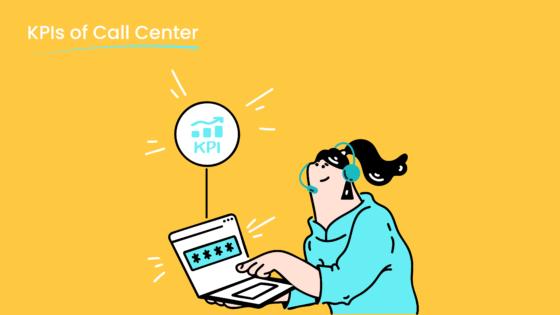
Tracking call center key performance indicators is essential to ensure success in 2025. Metrics like Customer Satisfaction Score (CSAT), Net Promoter Score (NPS), and First Call Resolution (FCR) help you measure how well your team meets customer needs. Operational KPIs such as Average Handle Time (AHT) and Agent Utilization Rate improve efficiency, while AI-driven insights offer actionable data to optimize performance.
For example, 96% of customers say service quality impacts brand loyalty, and 93% expect issues resolved on the first call. Tools like Sobot's AI-powered solutions can help you meet these expectations, delivering seamless experiences while reducing costs.
Customer-Centric Call Center Key Performance Indicators
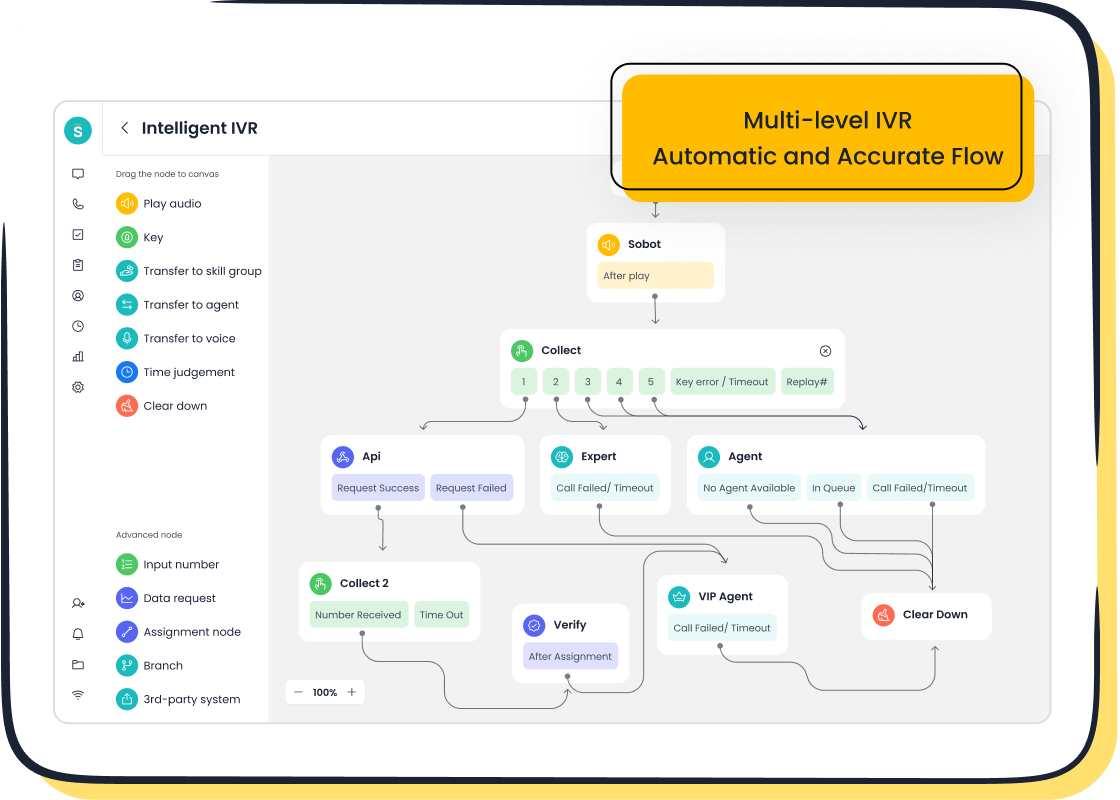
Customer Satisfaction Score (CSAT)
Customer Satisfaction Score (CSAT) measures how happy your customers are with your service. It is one of the most critical call center key performance indicators because it directly reflects the quality of your customer experience. CSAT surveys typically ask customers to rate their satisfaction on a scale, such as 1 to 5 or 1 to 10, after an interaction. Higher scores indicate better satisfaction levels.
Focusing on CSAT helps you identify areas for improvement. For instance, if customers consistently rate their experiences poorly, you can analyze the root causes and implement changes. Studies show that prioritizing customer needs and involving them in feedback processes lead to higher satisfaction and loyalty. Moreover, total satisfaction often serves as the starting point for building customer loyalty, which can significantly impact your business success.
Sobot’s Voice/Call Center solution can help you track CSAT effectively. With features like real-time monitoring and AI-powered insights, you can gather and analyze customer feedback seamlessly. This allows you to make data-driven decisions to enhance satisfaction and improve service quality.
Net Promoter Score (NPS)
Net Promoter Score (NPS) measures how likely your customers are to recommend your brand to others. It categorizes customers into three groups: Promoters, Passives, and Detractors. Promoters are loyal advocates, while Detractors are at risk of leaving. NPS is a powerful metric for understanding customer loyalty and predicting business growth.
High NPS scores correlate with increased customer retention and revenue. For example, resolving issues for Detractors can boost retention by up to 12%. Additionally, closing the loop in an NPS program improves retention rates by 1.3% annually. These insights highlight the importance of addressing customer concerns proactively.
Sobot’s omnichannel capabilities make it easier to collect NPS data across multiple platforms. By integrating customer feedback into a unified workspace, you can identify trends and take action to improve loyalty. This approach not only stabilizes revenue but also strengthens your brand reputation.
Customer Effort Score (CES)
Customer Effort Score (CES) evaluates how easy it is for customers to resolve their issues. It focuses on reducing friction during interactions, which is crucial for a positive customer experience. CES surveys often ask, “How much effort did you personally have to put forth to handle your request?” Lower effort scores indicate better service.
Research shows that 94% of customers with low-effort experiences are likely to make repeat purchases. In contrast, 96% of those with high-effort interactions report disloyalty. These findings emphasize the importance of minimizing customer effort to foster loyalty and satisfaction.
Sobot’s AI-powered tools, such as intelligent IVR and smart call routing, streamline customer interactions. By automating repetitive tasks and providing real-time support, Sobot reduces the effort required from customers. This not only enhances their experience but also builds long-term loyalty.
Operational Efficiency Call Center KPIs
Operational efficiency is the backbone of a successful call center. By tracking specific call center metrics, you can identify bottlenecks, improve processes, and enhance both agent productivity and customer satisfaction. Let’s explore three critical performance metrics that directly impact operational efficiency.
Average Handle Time (AHT)
Average Handle Time (AHT) measures the total time an agent spends on a call, including hold time and after-call work. It’s a vital metric for understanding how efficiently your team resolves customer inquiries. Lower AHT often indicates streamlined processes and well-trained agents.
For example, reducing AHT allows agents to handle more calls, boosting overall productivity. Shorter call durations also mean customers spend less time waiting, which improves their experience. However, it’s essential to balance speed with quality. Rushing through calls can lead to unresolved issues, negatively affecting customer satisfaction.
| Insight | Description |
|---|---|
| Understand agent preparation | AHT reveals how well agents are equipped to handle customer concerns. |
| Identify areas of improvement | Monitoring AHT helps pinpoint inefficiencies in processes or training. |
| Improve staffing and planning | AHT data aids in forecasting and scheduling for peak periods. |
| Elevate customer satisfaction | Lower AHT contributes to faster resolutions and happier customers. |
Sobot’s Voice/Call Center solution simplifies AHT tracking with real-time monitoring and AI-powered insights. Features like intelligent IVR and smart call routing reduce call durations by directing customers to the right agents quickly. This ensures your team can resolve issues efficiently without compromising quality.
First Call Resolution (FCR)
First Call Resolution (FCR) measures the percentage of customer issues resolved during the first interaction. It’s one of the most important call center key performance indicators because it directly impacts both customer satisfaction and operational efficiency.
High FCR rates reduce repeat calls, saving time and resources. For instance, companies like T-Mobile improved FCR by 20% through enhanced agent training, while Verizon achieved a 15% increase using AI-powered tools. These improvements not only enhance customer loyalty but also lower operational costs.
- Why FCR Matters:
- Resolving issues on the first call minimizes customer frustration.
- High FCR rates correlate with better customer satisfaction scores.
- Prioritizing FCR strategies leads to long-term profitability.
Sobot’s unified workspace and AI-driven tools empower agents to resolve issues faster. By integrating customer data and conversation histories, Sobot ensures agents have all the information they need to address concerns effectively. This approach boosts FCR rates and strengthens customer trust.
Call Abandonment Rate
Call abandonment rate measures the percentage of calls where customers hang up before speaking to an agent. While a low abandonment rate is desirable, it’s important to focus on the bigger picture. Pushing for extremely low rates can increase costs without significantly improving customer satisfaction.
For example, a high abandonment rate often signals long wait times or inefficient call routing. Addressing these issues can improve the overall customer experience. However, it’s crucial to strike a balance. Overstaffing to reduce abandonment rates may lead to unnecessary expenses.
- Key Considerations:
- Long wait times are a primary cause of high abandonment rates.
- Efficient call routing and staffing can lower abandonment rates.
- Focus on reducing abandonment rates without inflating operational costs.

Sobot’s smart call routing and real-time monitoring tools help you manage call volumes effectively. By optimizing workflows and providing agents with the right tools, Sobot ensures customers receive timely assistance, reducing abandonment rates without overburdening your budget.
Agent Performance Call Center Metrics
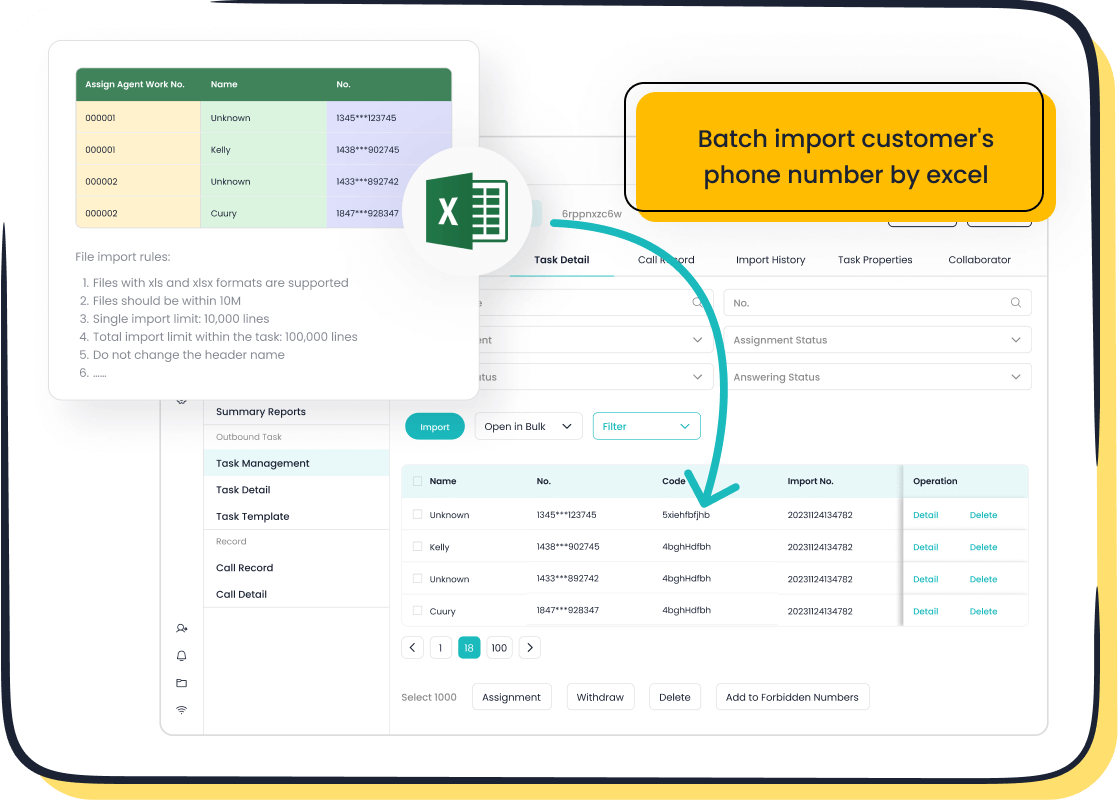
Agent Utilization Rate
Agent Utilization Rate measures the percentage of time agents spend actively handling calls versus being idle. This metric is crucial for understanding how effectively your team uses its resources. High utilization rates indicate increased productivity and better customer service outcomes. However, overutilization can lead to burnout, so maintaining a balanced rate is essential.
Studies show that the average agent utilization rate is only 48%, meaning nearly one-third of agents' time remains unproductive. This inefficiency can reduce revenue and customer satisfaction. To improve this metric, focus on workforce management, continuous training, and automation. For example, Sobot’s Voice/Call Center solution offers intelligent call routing and AI-powered tools that streamline workflows, ensuring agents spend more time assisting customers and less time on repetitive tasks.
- Key Benefits of High Utilization Rates:
- Increased productivity and operational efficiency.
- Enhanced customer satisfaction due to quicker resolutions.
- Reduced costs by optimizing agent workloads.
Adherence to Schedule
Adherence to Schedule tracks how well agents stick to their assigned work hours. This metric ensures your team is available when customers need them most. High adherence rates reflect efficient time management and optimized internal processes, while low rates may signal operational challenges.
Research highlights the importance of schedule adherence for maintaining agent performance. When agents follow their schedules, call centers can handle peak volumes effectively, reducing wait times and improving customer satisfaction. Sobot’s real-time monitoring tools help you track adherence rates and identify gaps. By addressing these gaps, you can ensure your team remains aligned with operational goals.
- Why Schedule Adherence Matters:
- Improves call center efficiency during peak hours.
- Reduces customer frustration caused by long wait times.
- Highlights areas for process improvement.
Average Speed of Answer (ASA)
Average Speed of Answer (ASA) measures the time it takes for agents to respond to incoming calls. This metric directly impacts customer satisfaction. Faster response times reduce frustration and build loyalty, while delays can drive customers away.
Data shows that reducing ASA enhances customer experience significantly. Quick responses foster trust and loyalty, while poor ASA can lead to dissatisfaction. Sobot’s smart call routing and AI-driven insights optimize workflows, ensuring agents answer calls promptly. By minimizing wait times, you can improve customer retention and overall satisfaction.
- ASA Insights:
- Faster answers lead to happier customers.
- Poor ASA can harm customer loyalty and brand reputation.
- Optimized workflows reduce wait times and improve efficiency.
Technology and Innovation Call Center Benchmarks
Self-Service Usage Rate
Self-service usage rate measures how often customers use automated tools like chatbots, IVR systems, or knowledge bases to resolve their issues. This metric highlights the effectiveness of your self-service options in reducing workload and improving customer satisfaction. When customers can solve problems independently, they experience faster resolutions, and your agents can focus on more complex tasks.
Automated self-service interactions cost only $0.10 compared to over $8 for live agent calls. These tools handle common requests like password resets or order tracking, deflecting tickets and reducing call volume. As a result, your team can manage workloads more efficiently. Increased self-service adoption also leads to higher satisfaction rates, as customers appreciate the convenience of resolving issues without waiting.

Sobot’s AI-powered Voice/Call Center solution enhances self-service capabilities with intelligent IVR and voicebots. These tools streamline interactions, ensuring customers find answers quickly. By integrating self-service options, you can lower your abandonment rate and improve overall efficiency.
AI-Driven Insights
AI-driven insights transform raw data into actionable strategies. These insights optimize workflows, reduce repetitive tasks, and enhance productivity. For example, predictive analytics identify trends in customer behavior, enabling you to anticipate needs and improve engagement. Real-time analysis of call performance fosters continuous improvement in agent skills.
A study shows that nearly half of call center leaders plan to deploy LLM-based solutions, reflecting a shift toward innovation. AI also reduces time spent on manual assessments, streamlining agent training and performance tracking. These benefits directly impact operational efficiency and customer satisfaction.
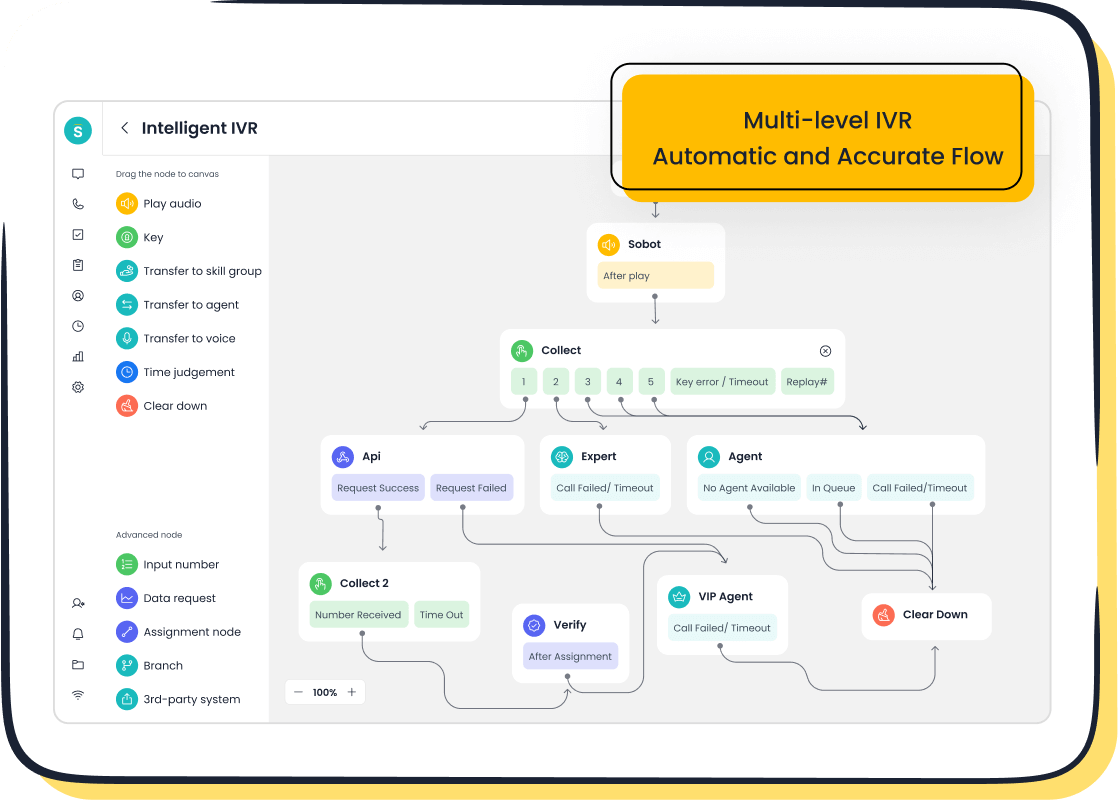
Sobot’s AI tools provide real-time monitoring and predictive analytics. By analyzing historical data, Sobot helps you identify patterns and improve decision-making. This approach ensures your team delivers consistent, high-quality service.
Omnichannel Engagement Metrics
Omnichannel engagement metrics measure how effectively you connect with customers across multiple platforms. These metrics focus on delivering seamless, personalized experiences, eliminating frustration from disjointed interactions. For example, omnichannel loyalty programs adapt to customer behavior, while lifecycle-triggered campaigns keep experiences relevant.
Research shows that 65% of customers expect companies to adapt to their changing preferences. Businesses engaging across 10 channels see higher satisfaction rates. Additionally, automation drives 45% of total revenue, highlighting the importance of unified messaging.
Sobot’s omnichannel capabilities unify communication channels like voice, chat, and social media. This integration ensures consistent messaging and enhances customer engagement throughout their journey. By leveraging these metrics, you can build stronger relationships and drive long-term loyalty.
How Sobot’s Voice/Call Center Solution Helps Track and Improve Call Center KPIs
Tools for KPI Tracking
Sobot’s Voice/Call Center solution offers advanced tools to help you monitor and analyze key customer service metrics. These tools provide real-time insights into customer satisfaction, agent performance, and operational efficiency. For example, the platform’s intelligent IVR and unified workspace allow you to track metrics like Average Handle Time (AHT) and First Call Resolution (FCR) seamlessly.

The solution also includes AI-powered analytics that transform raw data into actionable insights. You can identify trends, measure customer experience, and evaluate call center performance management with ease. A case study revealed that Sobot helped reduce inbound discussion volume by 20% while increasing positive feedback to 96%. This demonstrates how effective tracking tools can lead to measurable improvements in customer satisfaction.
| Case Study Description | KPI Improvement | Source |
|---|---|---|
| Reduced inbound discussion volume by 20% and increased positive feedback to 96% | Customer Satisfaction | Sobot |
| 85% of problems solved and 99% customer satisfaction | Problem Resolution | Sobot |
Strategies for KPI Improvement
Improving KPIs requires a combination of technology and strategy. Sobot’s Voice/Call Center solution empowers you to enhance customer experience through features like smart call routing and AI-driven voicebots. These tools ensure efficient issue resolution by directing customers to the right agent or self-service option quickly.
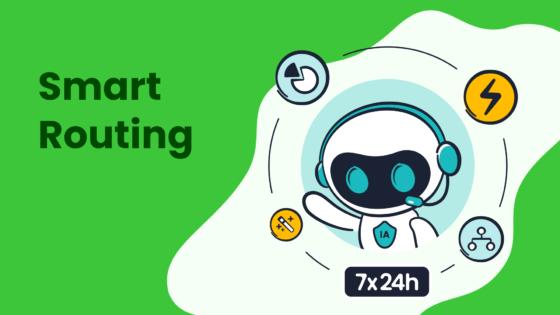
For example, Sobot’s platform enabled one client to achieve a 22.2% increase in independently answered customer questions, resulting in a CSAT score of 97%. By leveraging AI-powered insights, you can identify bottlenecks and optimize workflows. This approach not only improves operational efficiency but also enhances personalized customer experiences.
Best Practices for Sustained Success
To sustain success, focus on continuous improvement and adaptability. Regularly review your KPIs to identify areas for growth. Use Sobot’s real-time monitoring tools to track metrics like call abandonment rate and agent utilization. These insights help you make data-driven decisions that align with your goals.
Additionally, invest in agent training and technology upgrades. Sobot’s unified workspace simplifies workflows, allowing agents to focus on delivering exceptional service. A client using Sobot reported a 35% increase in sign-off rates and a 40% boost in COD collection rates. These results highlight the importance of combining technology with best practices to achieve long-term success.
Tracking call center KPIs is essential for ensuring success in 2025. Metrics like Call Arrival Rate and Repeat Call Rate help you identify inefficiencies, while others like Cost per Call optimize financial performance. For example, mismatched call arrival rates can lead to long wait times, frustrating 86% of customers who are willing to leave a brand after two poor experiences.

Sobot’s Voice/Call Center solution empowers you to monitor these metrics seamlessly. With tools like real-time monitoring and AI-driven insights, you can enhance customer satisfaction, streamline operations, and foster innovation. To stay ahead, regularly review your KPI performance and leverage advanced tools like Sobot’s unified workspace. These strategies ensure your team delivers exceptional service while maintaining operational efficiency.
FAQ
What is the most important call center KPI to track?
The most important KPI depends on your goals. For customer satisfaction, focus on metrics like CSAT and NPS. If operational efficiency matters, track Average Handle Time (AHT) and First Call Resolution (FCR). These metrics help you deliver better service while optimizing resources.
How can AI improve call center performance?
AI enhances call center performance by automating repetitive tasks, analyzing data, and providing real-time insights. For example, Sobot’s AI-powered tools streamline workflows and improve customer service. This technology reduces response times and ensures agents focus on complex issues, boosting overall efficiency.
Why is First Call Resolution (FCR) critical for customer satisfaction?
FCR ensures customer issues get resolved during the first interaction. High FCR rates reduce repeat calls, saving time for both customers and agents. For example, companies with strong FCR rates often see higher satisfaction scores, as customers value quick and effective service.
How does self-service benefit call centers?
Self-service tools like chatbots and IVR systems empower customers to resolve issues independently. This reduces call volumes and operational costs. For instance, automated interactions cost significantly less than live agent calls. Sobot’s intelligent IVR enhances self-service, improving customer satisfaction and efficiency.
What role does technology play in tracking KPIs?
Technology simplifies KPI tracking by providing real-time data and actionable insights. Tools like Sobot’s Voice/Call Center solution monitor metrics such as AHT and call abandonment rates. This helps you identify trends, improve processes, and deliver exceptional service consistently.
See Also
Essential Strategies for Effective Call Center Quality Management
Enhancing Call Center Efficiency Through Effective Monitoring Techniques
Best Call Center Analytics Tools to Use in 2024
Comprehensive Overview of Quality Management Systems for Call Centers
Key Functionalities to Look for in CRM Call Center Solutions
